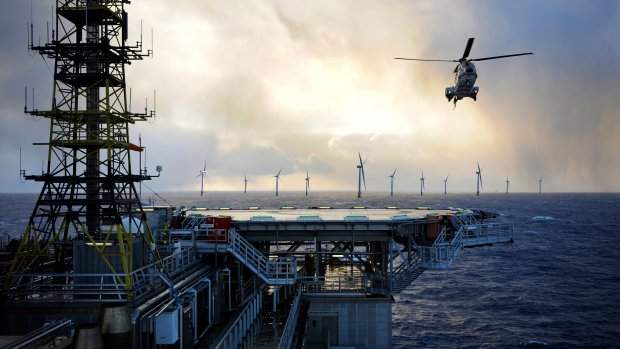Norwegian quality assurance company DNV GL has announced that it is working with Equinor to undertake a third-party verification study of the Hywind Tampen floating wind farm in Norway.

Image: Illustration of Equinor's proposed floating offshore wind farm to power the Gullfaks and Snorre fields. Photo: courtesy of Equinor ASA.
The Hywind Tampen project, which will be constructed approximately 200km west of Florø, Norway, features 11 8MW turbines that will meet 35% of the annual power demand of the Snorre and Gullfaks oil fields.
DNV GL said that the project marks the world’s first offshore wind farm to power oil platforms and floating offshore wind could would reduce more than 200,000 tons of emissions from the oil fields per year, which is equivalent to the emissions from 100,000 passenger cars.
The independent verification study to be undertaken by the DNV GL is expected to focus on the compliance of the floating wind turbines with the applicable codes and standards for floating offshore wind.
In addition, the study also focuses on the review and verification of the substructure design, tower and mooring system along with the critical load conditions and global design parameters.
DNV GL Energy Northern Europe, Middle East & Africa executive vice president Prajeev Rasiah said: “Reducing the use of gas for power generation by using floating offshore wind turbines to supply power to oil platforms is a challenging and innovative project with far-reaching benefits to both the oil and gas and renewables industries, and to combating climate change.
“Having been involved in floating wind for many years now, including as verification body on Equinor’s Hywind Scotland project, we’re excited to impart our expertise further on Equinor’s Hywind Tampen project.”
In September 2018, DNV GL published a revised standard for design of floating wind turbine structures DNV GL-ST-0119, and a new guideline for the certification of floating wind turbines, DNVGL-SE-0422.
The company said that the two documents together define design and certification requirements for floating offshore wind turbine concepts, prototypes and projects. The documents provide the guidelines for technical reference suite for the emerging technology to enable the safe and reliable realization of floating wind projects.
